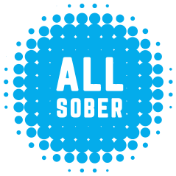Recovery Happens: Spread the Good News!
Media coverage highlights the exploding addiction rates in the U.S., but there’s another story too

“The only person you are destined to become is the person you decide to be.”
— Ralph Waldo Emerson
Media coverage every day highlights the exploding growth rate in the numbers of those suffering from substance use disorders. Oct. 2021 saw the release of statistics included in the annual SAMHSA (Substance Abuse and Mental Health Services Administration) National Survey on Drug Use and Health; the survey notes that 40 million Americans were living with a substance use disorder in 2020. Rates doubling from 2019 to 2020 partly reflect methodological changes in the survey, but they nonetheless point to a crisis in need of urgent societal and health care attention.
While alarming headlines create a call to action for necessary changes in how we approach the challenges of addiction and treatment, this continual focus on the negative tends to perpetuate the notion that addiction is a hopeless condition from which few recover. But a recent comprehensive research study reveals actual great news: 75% of people seeking recovery from a substance use problem do achieve their goal and achieve full remission in their lifetime.
There is a saying in some recovery support groups that “no one said getting sober is easy, but it’s worth it.” Recovery is marked with incredible challenges and often includes multiple attempts, setbacks and relapses to finally realize periods of stabilization followed by consistent and meaningful positive changes reflected in health and lifestyle choices. When one works hard for something, small and large victories feel like huge accomplishments.
No one admits to the joy of addiction, just the pain and misery that goes along with active addiction. Many may encounter similar emotional pain and disappointment as they struggle to change their mindset and behaviors that associate mood-altering chemicals with an ability to cope and function in life.
Each milestone achieved on the pathway of recovery, whether it is improving health, clearing of the mind, improved personal relationships, or balance of expectations at work and play, represents a building block to knowing that living a life fully engaged in recovery is possible.
Shifting the narrative to feature stories that celebrate the accomplishments, minor to truly transformative, of people working at and achieving sobriety goes a long way toward combatting stigma. Letting people know that most people do achieve full remission from the maladies that brought them much pain and misery is the best prescription for hope — that recovery can and does happen.
More Help & Information
Sobriety vs. Recovery: What's the Difference?
Are the concepts themselves up for debate? Do they require certain treatments, or abstinence from everything? It's complicated! And new ways of thinking are changing the conversation.
Now Elite NFL Players, They First Tackled Addiction | News Roundup
All Sober compiles the best of the latest headlines. Here's your addiction and recovery news for the week of Feb. 19, 2024!
Help Them Help You: Explaining Your Mental Health to Your Family
Your mental health can affect — and be affected by — your loved ones. Here's how to discuss it with them so everyone can heal.
Dry January (and Beyond): The Possibilities Are Endless
There's never been a better time to go sober. Whether you're trying it out this month or already living the life, join us for some tips, ideas, inspiration — and maybe even new friends.
Sober Holiday Tips: Meeting 'Share-a-Thons'
Need to get out of the house for a bit and see some friendly sober faces? Recovery support group meeting marathons run 24/7 from Christmas Eve through New Year's Day.
What Happens After an Intervention?
Your loved one agreed to get treatment for addiction during their intervention — or not. Here's what you need to know about what comes next.
We're in This Together: Building a Healthy Sober Support Network
You are the captain of your recovery, but you don't have to do it alone. A sober support network will lift you up in tough times and celebrate your triumphs.
Real-Life Recovery Tips: Phone a Friend
When you're traveling, you can take your sober support network with you — right in your pocket. Rocker Kasim Sulton shares his top recovery tip in this video.











